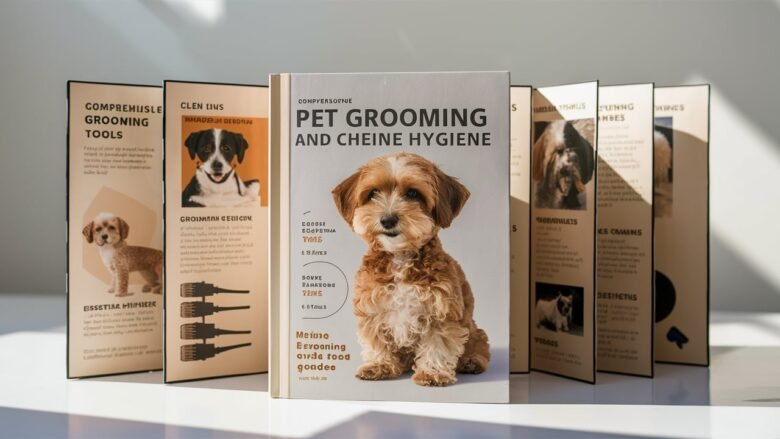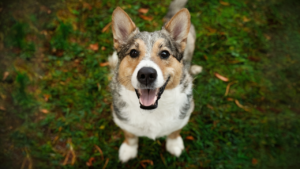Grooming pets is an essential aspect of responsible pet ownership, ensuring their health, hygiene, and overall well-being. This guide delves into various facets of grooming, including breed-specific techniques, cat coat care, daily brushing for dogs, effective hygiene products, and popular grooming styles for animals. Understanding these elements empowers pet owners to provide better care for their furry friends.
Understanding Breed-Specific Grooming
Understanding breed-specific grooming is vital for maintaining both the health and aesthetic appeal of various dog breeds. Each breed possesses unique coat characteristics requiring tailored grooming practices. For example, the dense fur of a German Shepherd demands regular brushing to prevent mats, while Poodles need specialized clipping to uphold breed standards. Professional groomers are essential for achieving the ideal look and ensuring the dog’s comfort throughout the grooming process.
Cat Coat Care Essentials
Cat coat care is essential for maintaining the health and appearance of feline companions. Different coat types require tailored techniques—short-haired breeds benefit from brushing once a week, while long-haired cats need daily attention. Utilizing grooming gloves aids in removing loose fur and provides a massaging effect that cats often enjoy. Specialized tools, such as slicker brushes and combs, effectively prevent matting and enhance skin health, ensuring a happy, healthy cat.
The Importance of Daily Brushing for Dogs
Daily brushing for dogs is essential for several reasons. It minimizes shedding, which can lead to a cleaner home, while also preventing skin issues by removing dead hair and dirt. A well-groomed coat can enhance your dog’s overall hygiene, contributing to healthier skin and a shinier appearance. Establishing a daily brushing routine fosters a strong bond between you and your dog, making grooming a pleasurable experience.
Selecting the right brush depends on your dog’s coat type. For short-haired breeds, a bristle brush can effectively remove loose hair. Medium-haired dogs benefit from a slicker brush to detangle and smooth their fur. Long-haired breeds typically require a wide-toothed comb followed by a slicker brush to prevent matting. Always opt for high-quality tools tailored to your dog’s specific needs for optimal results.
To make brushing a positive experience, associate it with treats and praise. Start with short, gentle sessions to allow your dog to acclimate. Gradually increase the length of time spent brushing as your pet becomes more comfortable. Ensure a calm environment, using soothing tones to ease any anxiety. This approach will transform brushing from a chore into a bonding activity that your dog enjoys and anticipates.
The Best Pet Hygiene Products
Maintaining cleanliness and health in pets relies heavily on the right hygiene products. For effective grooming, use gentle cleansers tailored for your pet’s specific needs, such as hypoallergenic shampoos for sensitive skin. Wipes offer convenience for quick clean-ups, particularly in hard-to-reach areas. Dental care items, including enzymatic toothpaste and dental chews, promote oral health. Always ensure products are safe and appropriate for your pet’s age, size, and breed.
Diverse Grooming Styles for Animals
Grooming styles can vary widely across species and breeds, with each requiring tailored techniques to enhance their unique characteristics. For instance, poodles benefit from *austere trims* that showcase their curly coats, while spaniels often feature *feathering* to highlight their elegance. Cats may sport *lion cuts* for both style and practicality, especially in warmer months, while terriers might embrace a *hand-stripping technique*, maintaining their wiry fur.
Fashionable grooming trends such as *creative dye jobs* and intricate *patterns* have gained popularity, allowing for artistic expression while still ensuring functionality. Grooming also plays a vital role in pet exhibitions, where judges assess both the cleanliness and presentation of each animal, necessitating a thorough understanding of breed standards and grooming etiquette. Emphasizing these diversities not only enhances a pet’s appearance but can also contribute to their health and well-being when performed appropriately.
Building a Grooming Routine
Establishing an effective grooming routine is essential for every pet owner. Start by identifying the specific grooming needs and timeframes for your pet’s breed, which can vary significantly. Create a checklist that includes brushing, bathing, nail trimming, and ear cleaning tailored to your pet’s requirements. Integrate grooming into daily activities by setting designated times, making it a bonding experience. Remember, patience and consistency are key to ensuring a successful grooming regimen, fostering a positive atmosphere for both pet and owner.
Conclusions
In summary, pet grooming is not just about aesthetics but plays a crucial role in maintaining the health and hygiene of animals. By adopting breed-specific grooming techniques, prioritizing coat care, and utilizing appropriate hygiene products, pet owners can enhance the quality of life for their pets. Regular grooming fosters a loving bond and ensures their happiness.



